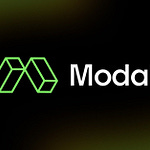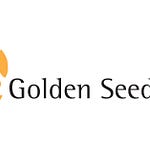Many startups are aspiring to “grow into their valuations” from 2021. For most of them, this will take a couple of years, at minimum. Even once they reach that target revenue level, these startups will need to show that at the end of that period, they can continue to grow fast — since their valuation presumed they would be able to sustain high growth rates into the future.
Mary D’Onofrio, a partner at Bessemer Venture Partners, coined the term “growth endurance.” The idea is: If you’re a venture-backed SaaS company, it’s not unusual to grow fast to $1M or $3M in ARR. What is unusual is growing fast to $100M ARR and continuing to grow fast after that. Growth endurance is about sustaining those high growth rates.
This isn’t an argument for being a turtle instead of a hare. It’s also not an argument for being a hare for longer distances — because the essence of a hare is the lack of long-term perspective. Companies that sustain high growth endurance blend the best attributes of the hare (speed) and the turtle (longevity).
In this conversation, Mary and I discuss the origin story of the term growth endurance and why it matters. We cover:
How does growth endurance factor into her investment decisions?
What counts as “good” growth endurance?
What are the primary factors that allow a startup to have high growth endurance?
You can listen to the podcast or else read the lightly edited transcript of the conversation below. Let's dive in!
Leadership Roles
Here are a few leadership roles at companies that I’m excited about.
Arketa: Head of Demand Gen
Aviator: Growth Marketing Manager
Bubble: Director, Partnerships
Clutch: Head of Enterprise Sales
Explo: Head of Marketing
Jasper: Lots of roles across engineering and product!
Motive (formerly KeepTruckin): VP of Customer Success - contact john.gleeson@gomotive.com
Pocus: Founding AE and other roles in Customer Success, Biz Ops, Demand Gen here
Transcript
Allison: Mary, I am super excited to have you on the podcast today. I've loved getting to know you over the years and absorbing your sharp insights into what it takes to continue to grow fast when you're at scale. In particular, you coined the term "growth endurance," which is the subject that I'm exploring over this Substack series, so I'm really excited to go back to the source, learn about the origin story behind this, and pick your brain about what it takes to be a late-stage CEO.
Mary: Thanks so much for having me. I'm thrilled to be here.
Allison: To get started, what is the origin story of the term, "growth endurance"?
Mary: I've spent a lot of time thinking through cloud and SaaS metrics. I authored the Scaling to $100 Million report, and I also managed the BVP NASDAQ Emerging Cloud Index, which is a public benchmark of cloud stocks. When dealing with that index, I was impressed that the average growth rate for a cloud index company often exceeds 30%. But, in a previous life, I was an investment banker, and I would see a lot of analyst models. They would all have growth rates decelerating pretty massively over 5 to 10 years, with a high rate of decay to some terminal growth rate. But to support a 30%+ growth rate at scale, which is what demarcates a lot of these public cloud companies, I assumed that that kind of rate of decay had to be wrong. So, did an analysis of both private and public software companies and noticed that there is a resilience in growth rate in cloud, which I named “growth endurance.”
Allison: Super interesting. Can you talk a little bit more about why growth endurance is important?
Mary: Growth endurance is the retention of growth rate from one year to the next. As a metric, growth endurance is the ratio of this year’s growth rate to last year’s growth rate. So if your growth rate this year is 40%, and your growth rate last year was 50%, then your growth endurance is 80%.
It's important as it signals the extent to which a company can build momentum. If you assume the average BVP NASDAQ Emerging Cloud Index company is growing 35% year over year, then at maturity, you can back into the requisite growth rates that you're going to need to hit that exit velocity and be welcomed into the public markets. You can also assume that for a lot of strategic M&A activity, that high growth rate is also necessary. If you can't hit those growth levers, you might have to take another path.
In addition to helping you secure the exit in and of itself, your growth endurance often also signals market pull, customer velocity, and general interest in your product. So, it's important both for the financing outcomes that you can anticipate, and also as a proxy or heuristic for overall company success.
Allison: How does growth endurance actually factor into your investment decisions as a VC?
Mary: It helps us to understand the ARR trajectory of the business. Given the consistency of growth endurance that we see in cloud companies, it influences where we think future growth rates of a business will land. So, companies with higher historic growth endurance year over year will likely retain those higher growth rates compared to companies with lower growth endurances. And as a heuristic, it helps you make judgments with imperfect information.
We see 30% growth decay (i.e. 70% growth endurance) for private cloud companies, and 20% (i.e. 80% growth endurance) for public cloud companies. So companies that had high growth endurances, above 80%, puts them in line with their public peers. At Bessemer we say 70% growth endurance is “good,” 75% is “better,” and 80% is “best.” And obviously there's a long distribution on both sides. This kind of benchmarking is helpful to investors.
I don’t mean to say that hitting these growth endurance benchmarks is the end-all, be-all to achieve success and scale. There are companies that have jumped between those buckets above. For example, Procore early in its life was actually growing relatively slowly. And now their growth endurance is high and has been for many of the past few years. However, we tend to find that the trendline is relatively predictable.
Allison: Does growth endurance tend to vary based on what your earlier growth rates are? Let’s say you're starting out as a best-in-class company where you're quintupling, quadrupling, tripling, doubling, doubling. Are you more likely to have high growth endurance than a company that had lower growth rates earlier on?
Mary: What we have found is that those trends continue largely throughout a company's life. As I was mentioning with Procore, there's an ability to switch between quartiles. However, if you look at the pathway of many companies — Toast, for example — they stayed in the “best” category of growth endurance basically their entire pathway. I think if you're quintupling from $1M ARR to $5M ARR, what you effectively have is a little bit more leeway on experimentation and some ability to make a few more mistakes. If your growth endurance is lower next year by 50 percent, you're still growing 2.5x. The interesting thing when you think about growth endurance is the implications from a starting point.
If you think about growing 300%, for example, to $1M ARR, a good company with 70% growth endurance can reach $100M ARR in 12 years, whereas a best-in-class company with growth endurance of 80% would reach $100M in 6 years. While it’s just a heuristic, at Bessemer we think of $100M ARR as a milestone for the ability to IPO. Growth rates compounding have a very, very high impact on, first of all, if you reach that level of $100M, and second of all, how quickly you reach it.
While it’s just a heuristic, $100M tends to be the place we think a lot about at Bessemer. And I think the market broadly believes that that's exit scale, especially in IPO markets. Growth rates compounding have a very, very high impact on, first of all, if you reach that level of $100M, and second of all, how quickly you reach it.
Allison: Can you talk a little bit more about how you're determining the segments of the market that you're analyzing benchmarks for? You said that the average for the public cloud is 80% growth endurance. I’m surprised to hear that, because many public cloud companies are not all that well-run. So this 80%, does it represent all public companies? And what is the distribution?
Mary: If you look at the histogram, the distribution is wide. There are some companies that have growth endurance of 50%, and there are many companies that have growth endurance over 100%. Eighty percent, however is the regression of this year’s growth against next year’s growth. But public cloud companies go all the way from under 30% growth endurance to over 150% growth endurance. Between 70 and 100% captures about 50% or more of the public cloud companies. So there is truly distribution there.
Allison: I'm thinking a little bit about why is it that not many companies succeed in growing to scale. And to give some context on this, your team at Bessemer came out with your annual State of the Cloud Report a few months ago. It showed that while 520 unicorns (i.e. companies with $1B valuations) were minted in 2021, only about 60 new $100 million dollar ARR companies were added. And you gave those companies Centaur status. Centaurs are seven times more rare than unicorns. Why are there comparatively few companies that have achieved the $100M ARR threshold, and is it somehow related to their growth endurance?
Mary: To get to $100M, companies obviously have to overcome many strategic and operational challenges — achieving a scalable go-to-market, strong product-market fit, and a large and growing customer base that can propel it. Obviously, those outcomes are really difficult to achieve, and unfortunately, they aren't reflected by being a unicorn, a valuation milestone. And especially in the past couple of years when we've seen deals pricing at 30, 50, even 100x, a company at $10M ARR can be a unicorn. However, that's a very, very far cry from being a $100M truly enduring business, and me and my partner, Adam Fisher, noticed this. We therefore sought to coin another term that did demarcate an enduring business, and that was reaching $100M of ARR, achieving “Centaur” status. In our research at Bessemer we have not yet found a $100M business that has not endured or perpetuated in some way. Some of them have not become huge companies that changed the way that we live and work, but they have in fact perpetuated. So I think the way that it relates to growth endurance, is that the ability to drive high growth endurance is also predicated on the same thing that drives you to $100M ARR, which is scalable go-to-market and product-market fit in a customer pool. And so, they're very directly related, even if not causal.
Allison: What are the primary factors that you found have allowed companies to have high growth endurance?
Mary: The first is go-to-market strategy. The most effective lever in driving high growth endurance is your go-to-market strategy, whether it be enterprise-driven, PLG, cloud marketplace, or a combination thereof. And refining this obviously takes time, so we recommend that you ramp only what works.
The second is product quality. In the past, excellent sales and marketing execution might have been able to obfuscate poor product quality, but now there's product-led evaluations and emphasizing the importance of delivering an incredible proprietary product to your customers. Customer pull is important.
Lastly, unit economics and cash efficiency. You need to use your money well, you need to think about the experiments you want to run before you run them, and make investments with the highest ROI. Oftentimes on the path to $100M, companies have to make a lot of decisions, whether it's new products, new geographies, new strategies. And oftentimes this comes with a very, very close evaluation of trade-offs and ensuring that those investments have high ROI.
Allison: I’m thinking about various go-to-market strategies and how they relate to growth endurance. I see companies that are in the tens of millions of ARR pursuing different paths. Some of them have a market that is very large and not very penetrated, but that is ready to buy. And so, the size of the market, or possibly the growth of the market, can continue to propel their growth over time. There are other companies that become very good at launching add-on products that they can cross-sell, and there are others that become very good at expanding into new geographies.
Which go-to-market strategies are most likely to result in continued high growth rates for a long time? Do you have a preference across those different options that I mentioned?
Mary: I think that figuring out the growth lever that's going to drive your business is really predicated on the particularities of your product, your user base, etc. But I do think that those different strategies work well for different companies. For example, I was referencing Toast earlier, which is a restaurant POS system. They started with their core POS hardware and software, but over time they layered in payments and capital. Their revenue in June was $2.2B, with growth endurance above 100% and over $23B in gross payment volume quarterly. They were able to layer in a new product that penetrated their existing customer base to drive ACV's and therefore to drive higher growth endurance and higher growth rates, by selling more to the existing set of customers.
You can acquire a new business to drive additional offerings to your existing customers. Twilio acquired SendGrid, which was previously led by one of our Bessemer investment partners, Sameer, and they also acquired Segment. The strategy is about being able to offer more and more products to your customers, obviously with the need to have a strong integration strategy, have a cross-sell/upsell strategy, and make sure that that's a platform that customers actually really want. I don’t have a preference on the exact GTM strategy that you pick as that will be specific to your business, but what I do have a preference for is ensuring that you run experiments and you do a lot of thought and in-market work before making those investments.
Allison: Makes a ton of sense. To close this out, what is one tip you would have for founders looking to sustain 70% to 100% growth rates for years into the future?
Mary: Early on, teams are often thinking a quarter or a month ahead. But on the pathway to scaling and achieving strong growth endurance, and getting to $100M and beyond, leadership and finance in particular, should be actively thinking about second products, go-to-market strategies, hiring plans, and setting structures and systems that the company that will drive strong growth figures ahead. Oftentimes, the decisions that affect you two years in the future are made today. Thinking about roadmap and future planning, rather than simply, "How do I hit my number this month or this quarter?" is imperative.
Allison: Mary, thank you so much for joining us today. It was awesome to hear from you.
Mary: Thanks so much for having me.











